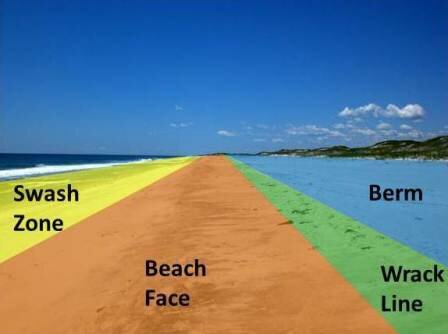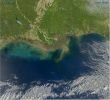Those who really love to visit beaches in the world might consider one of these following facts about the beach really interesting to read. Beach is a landform along the shoreline of an ocean, sea, lake, or river. It usually consists of loose particles, which are often composed of rock, such as sand, gravel, shingle, pebbels, or cobblestones. The particles comprising a beach are occasionally biological in origin, such as mollusc shells or coralline algae. Furthermore, to get you to know more about it, below are some other facts about the beach you might be interested in.
Facts about the Beach 1: Infrastructure
Some beaches have man-made infrastructure, such as lifeguard posts, changing rooms, and showers. They may also have hospitality venues (such as resorts, camps, hotels, and restaurants) nearby. Wild beaches, also known as undeveloped or undiscovered beaches, are not developed in this manner. Wild beaches can be valued for their untouched beauty and preserved nature.
Facts about the Beach 2: Conspicuous Part
There are several conspicuous parts to a beach that relate to the processes that form and shape it. The part mostly above water (depending upon tide), and more or less actively influenced by the waves at some point in the tide, is termed the beach berm. The berm is the deposit of material comprising the active shoreline.
Facts about the Beach 3: Popular Leisure
The development of the beach as a popular leisure resort from the mid-19th century was the first manifestation of what is now the global tourist industry. The first seaside resorts were opened in the 18th century for the aristocracy, who began to frequent the seaside as well as the then fashionable spa towns, for recreation and health.
Facts about the Beach 4: Seaside Resort
One of the earliest such seaside resorts, was Scarborough in Yorkshire during the 1720s; it had been a fashionable spa town since a stream of acidic water was discovered running from one of the cliffs to the south of the town in the 17th century.The first rolling bathing machines were introduced by 1735.
Facts about the Beach 5: Popular Beach Resorts
Many of the popular beach resorts were equipped with bathing machines because even the all-covering beachwear of the period was considered immodest. By the end of the century the English coastline had over 100 large resort towns, some with populations exceeding 50,000.
Facts about the Beach 6: French Riviera
The development of the seaside resort abroad was stimulated by the well developed English love of the beach. The French Riviera alongside the Mediterranean had already become a popular destination for the British upper class by the end of the 18th century. In 1864, the first railway to Nice was completed, making the Riviera accessible to visitors from all over Europe.
Facts about the Beach 7: Beaches in Victorian Era
Beaches can be popular on warm sunny days. In the Victorian era, many popular beach resorts were equipped with bathing machines because even the all-covering beachwear of the period was considered immodest. This social standard still prevails in many Muslim countries. At the other end of the spectrum are topfree beaches and nude beaches where clothing is optional or not allowed.
Facts about the Beach 8: Beach Style
The soothing qualities of a beach and the pleasant environment offered to the beachgoer are replicated in artificial beaches, such as “beach style” pools with zero-depth entry and wave pools that recreate the natural waves pounding upon a beach. In a zero-depth entry pool, the bottom surface slopes gradually from above water down to depth.
Facts about the Beach 9: Formation
Beaches are the result of wave action by which waves or currents move sand or other loose sediments of which the beach is made as these particles are held in suspension. Alternatively, sand may be moved by saltation.
Facts about the Beach 10: Materials
Beach materials come from erosion of rocks offshore, as well as from headland erosion and slumping producing deposits of scree. Some of the whitest sand in the world, along Florida’s Emerald Coast, comes from the erosion of quartz in the Appalachian Mountains.
Hope you would find those Beach facts really interesting, useful and helpful for your additional reading.










 www.PortlandPayday.Loans
www.PortlandPayday.Loans